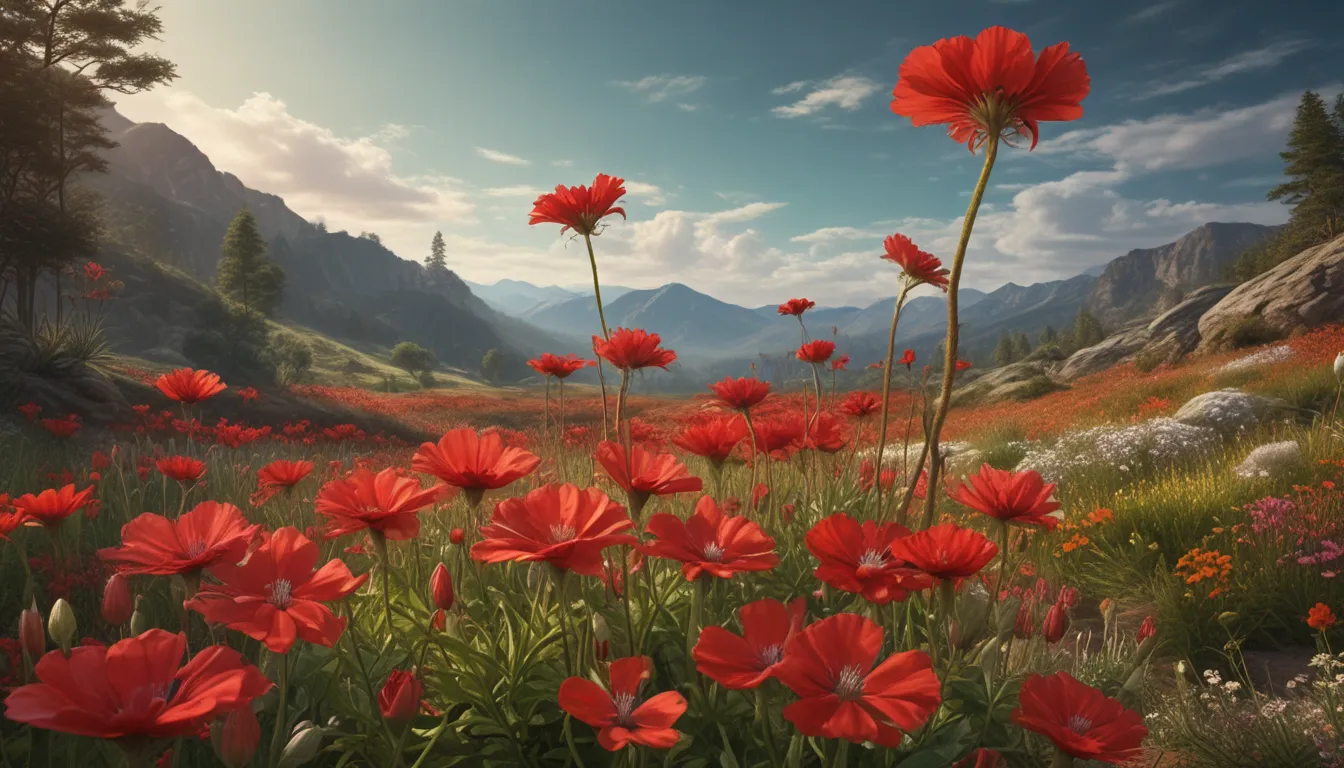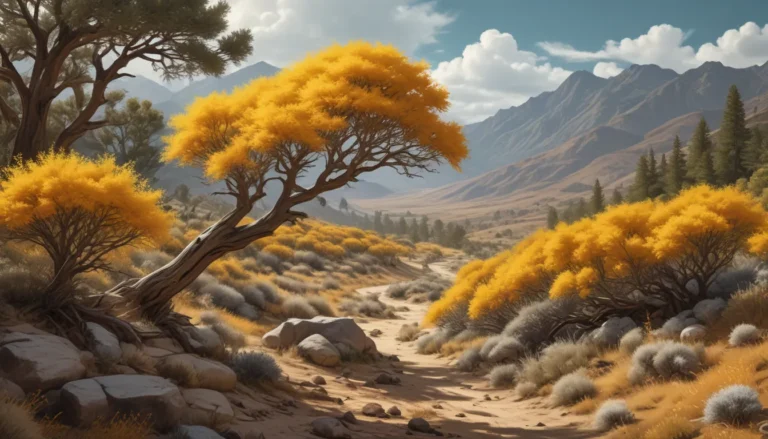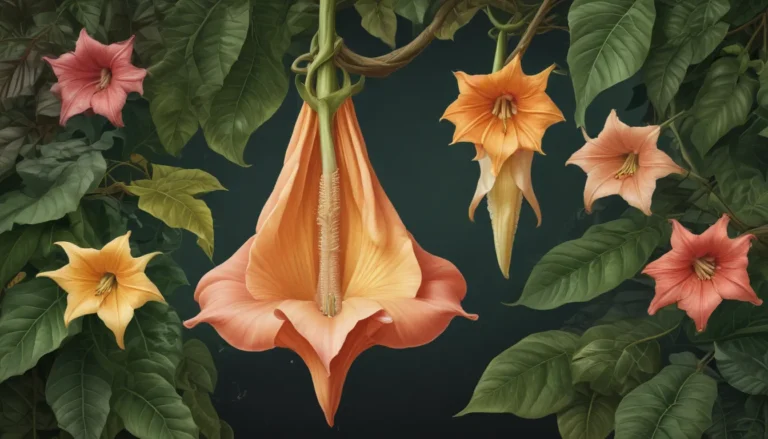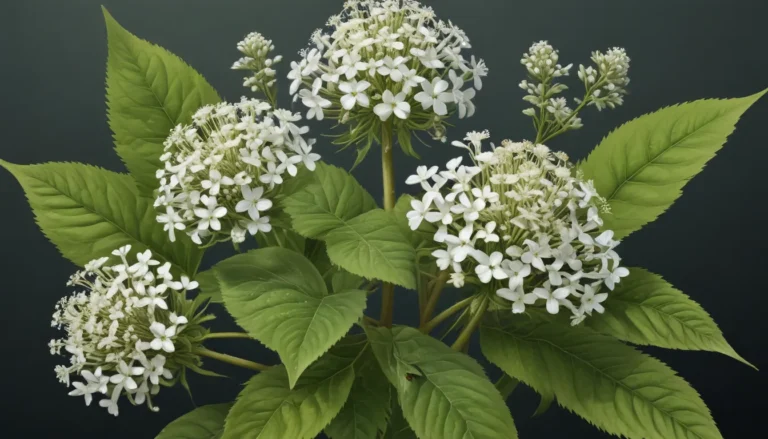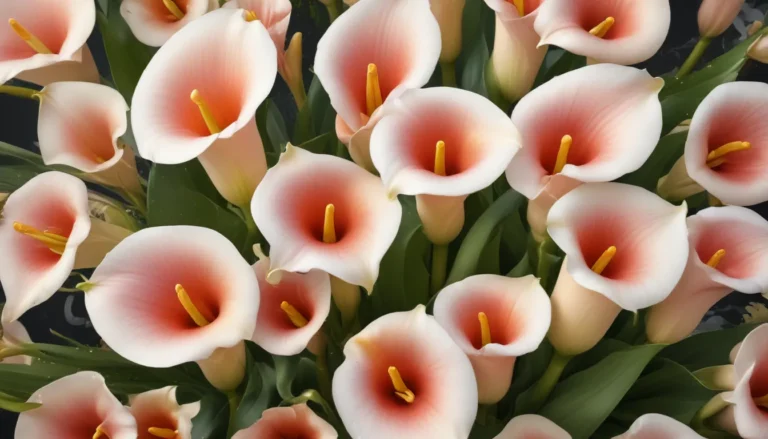The pictures we use in our articles might not show exactly what the words say. We choose these pictures to make you interested in reading more. The pictures work together with the words but don’t take their place. The words still tell you the important facts.
When it comes to captivating wildflowers, the Scarlet Gilia, also known as Ipomopsis aggregata, stands out as a true gem of nature. With its vibrant red blooms and slender stalks, this plant not only catches the eye but also holds a rich history and an array of fascinating qualities waiting to be discovered. Join us on a journey as we unveil 14 intriguing facts about the Scarlet Gilia, shedding light on its beauty, resilience, and importance in the natural world.
The Scarlet Gilia: A Dazzling Display of Color
Native to western North America, the Scarlet Gilia is a breathtaking wildflower that graces rocky terrains and arid landscapes with its brilliant red or orange tubular flowers. Its vivid hues stand out as a beacon of beauty in the wilderness, attracting admirers and pollinators alike.
The Hummingbird’s Delight
One of the Scarlet Gilia's most charming attributes is its allure to hummingbirds. With long tubular flowers brimming with nectar, these petite birds are drawn to the vibrant blooms, creating a picturesque scene as they flit around, pollinating the flowers in the process.
Adaptable and Resilient: A Symbol of Hope
Scarlet Gilias are known for their adaptability, thriving in various habitats from open meadows to alpine environments. Their resilience in the face of harsh conditions not only makes them a symbol of strength in the plant kingdom but also a beacon of hope in the midst of adversity.
A Burst of Blooms: Nature’s Spectacular Show
During full bloom, the Scarlet Gilia puts on a show-stopping display with multiple flower stalks adorned with clusters of tubular blossoms. The abundance of blooms adds to its allure, creating a mesmerizing sight for all who encounter it.
A Prolonged Blooming Season
From late spring to well into the summer months, the Scarlet Gilia offers a prolonged blooming season, ensuring that its beauty graces the landscape for an extended period. Its enduring presence serves as a source of joy and inspiration throughout the changing seasons.
Attracts a Diverse Array of Pollinators
Beyond hummingbirds, Scarlet Gilias play a vital role in supporting native bees and butterflies. Their intricate flower structure and abundant nectar provide a valuable food source for these pollinators, contributing to the overall health of the ecosystem.
The Magical Relationship with Fire: A Story of Survival
One of the most intriguing facts about the Scarlet Gilia is its unique relationship with fire. Evolved to benefit from wildfires, the heat and smoke stimulate the germination of its seeds, clearing out competing vegetation and giving it a competitive edge in the wild.
A Symbol of Endangered Habitats: Conservation Concerns
Facing habitat loss and disturbances from human activities, the Scarlet Gilia is a species of concern for conservationists. Its presence or absence in native habitats serves as an indicator of ecosystem health, underscoring the importance of preserving these vital landscapes.
Versatile Medicinal Uses: Traditional Wisdom
Throughout history, Native American tribes have valued the Scarlet Gilia for its medicinal properties, using it to treat respiratory issues, digestive disorders, and pain relief. While its medicinal uses are fascinating, it's essential to seek guidance from experts before utilizing it for medicinal purposes.
Tiny Gems of Life: Scarlet Gilia Seeds
The seeds of the Scarlet Gilia are small treasures, resembling tiny gems that hold the promise of the next generation of vibrant flowers. Dispersed by the wind or through the droppings of birds and small mammals, these seeds carry the legacy of beauty and resilience forward.
A Favorite Among Gardeners: Adding Charm to Landscapes
Gardeners adore the Scarlet Gilia for its vibrant blooms and pollinator-attracting qualities, making it a popular choice for those seeking to enhance their gardens with a splash of color. Whether grown from seeds or propagated through cuttings, this wildflower adds a touch of beauty to any outdoor space.
A Photographer’s Delight: Capturing Nature's Essence
The Scarlet Gilia's striking flowers and contrasting foliage make it a sought-after subject for photographers. Whether in the wild or meticulously curated gardens, capturing the essence of this wildflower becomes an artful pursuit, showcasing the beauty of nature in its purest form.
Conservation Efforts in Motion: Preserving a Natural Treasure
Aware of the Scarlet Gilia's conservation status, dedicated organizations and individuals are working together to protect and restore its habitats. Through seed banks, botanical gardens, and collaborative efforts, the preservation of this captivating wildflower is a top priority.
A Symbol of Hope and Resilience: Embracing Nature’s Wisdom
With its vivid colors and unwavering resilience, the Scarlet Gilia stands as a symbol of hope in the face of challenges. It reminds us of nature's ability to adapt and endure, urging us to preserve the delicate balance of our ecosystems for future generations.
In conclusion, the Scarlet Gilia is a true wonder of the natural world, captivating hearts with its beauty and inspiring minds with its resilience. Whether in a garden setting or flourishing in the wild, this wildflower continues to enchant all who encounter it. By delving into its rich history and diverse qualities, we gain a deeper appreciation for the intricate tapestry of nature that surrounds us.
FAQs: Unveiling the Mysteries of Scarlet Gilia
-
What is the scientific name for Scarlet Gilia?
The scientific name for Scarlet Gilia is Ipomopsis aggregata. -
Where is Scarlet Gilia commonly found?
Scarlet Gilia is native to North America and thrives in mountainous regions such as the Rocky Mountains and Sierra Nevada. -
Does Scarlet Gilia attract pollinators?
Yes, Scarlet Gilia is known for attracting hummingbirds with its bright red tubular flowers. -
Can Scarlet Gilia be grown in gardens?
Absolutely, Scarlet Gilia can flourish in gardens as long as they receive ample sunlight and well-drained soil. -
Are there any uses for Scarlet Gilia in traditional medicine?
Indeed, Native American tribes have utilized Scarlet Gilia for medicinal purposes, especially for respiratory and digestive ailments. -
Is Scarlet Gilia easy to care for?
Scarlet Gilia is relatively low-maintenance, requiring minimal care once established. Regular watering and occasional pruning are typically sufficient for its upkeep. -
Can Scarlet Gilia be propagated from seeds?
Yes, Scarlet Gilia can be easily propagated from seeds, making it a delightful option for gardeners looking to expand their floral collection. -
Does Scarlet Gilia hold cultural significance?
Certainly, Scarlet Gilia is culturally significant for Native American tribes, symbolizing life and spirituality in their traditions.
As we delve deeper into the enchanting world of Scarlet Gilia, we uncover a treasure trove of natural wonders and historical significance. Embracing its beauty and resilience, we not only enrich our gardens and surroundings but also cultivate a deeper connection to the intricate web of life that surrounds us. Join us in celebrating this captivating wildflower and the profound lessons it has to offer as we continue to explore the boundless mysteries of the natural world.
